I’ve seen and heard plenty of 2-way speakers where a full-range driver was crossed over with a tweeter or super-tweeter, but not very many where the full-range driver is paired with a woofer. Is there a reason for this? The drivers I’m looking at are the Tang Band W5-2143 and the SB Acoustics SB34NRX75-6 with a LR2 @ ~400Hz (using a miniDSP for XO filter and frequency response tuning). My primary concern is that the full-range Tang Band driver might be taking on too much of the music and will be unable to keep up with more complex passages. I plan to keep the Qtc of the Tang Band in the vicinity of .5, (1 cu ft) which should help. The SBA woofer will likely sit around a Qtc of .8. (~2 cu ft). But will that be enough to reproduce complex passages without loss of detail? I don’t want to unintentionally restrict my listening library. For… reasons, I need to keep my cabinet down to ~3 cu ft, total. Pros and cons?
This is a common combination, sometimes referred to as FAST or WAW. 400Hz is not uncommon.
You can go lower than 400Hz.
https://www.diyaudio.com/community/threads/10f-8424-rs225-8-fast-waw-ref-monitor.273524/
https://www.diyaudio.com/community/threads/10f-8424-rs225-8-fast-waw-ref-monitor.273524/
Last edited:
Oh wow! I wasn't tracking that's what those were called and didn't know the terms to use for a search. Thank you both!
Jeff Bagby (RIP)-Kairos and Continuum 3 way
This is with passive filters, check it out to get some ideas.
https://app.box.com/s/a4bqr447s7ox7v9kt7r9tjui0h7yqkrv
This is with passive filters, check it out to get some ideas.
https://app.box.com/s/a4bqr447s7ox7v9kt7r9tjui0h7yqkrv
but not very many where the full-range driver is paired with a woofer. Is there a reason for this?
That is quickly growing. Up until recently it was not much explored. Many examples are showing up here, and there is a lot of room for development of new ones.
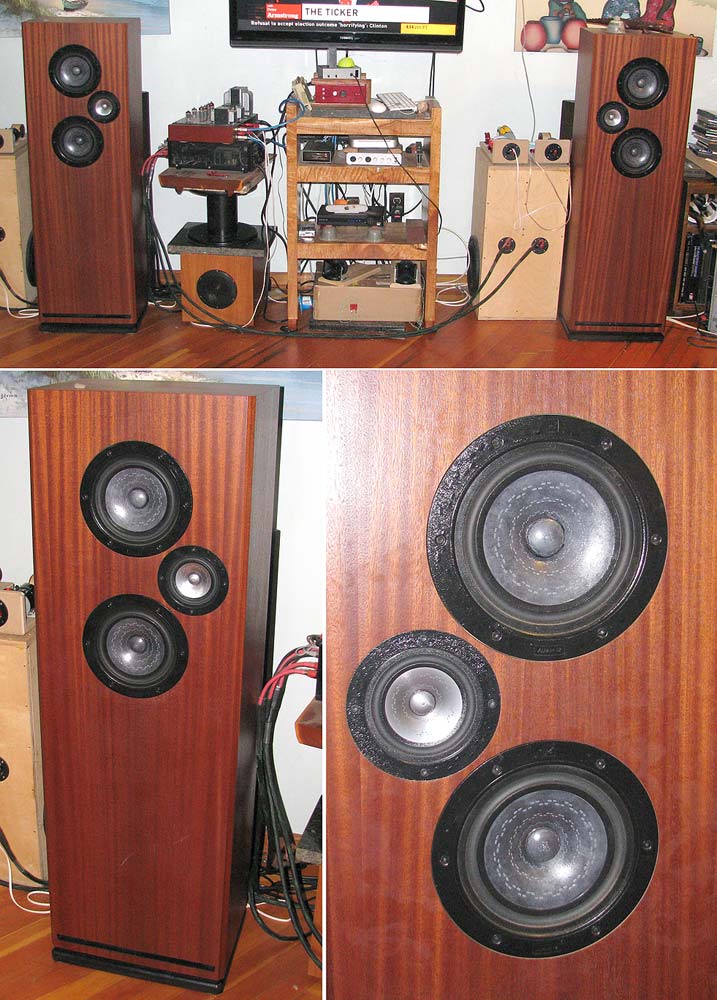
This one does not yet have the drivers reinstalled
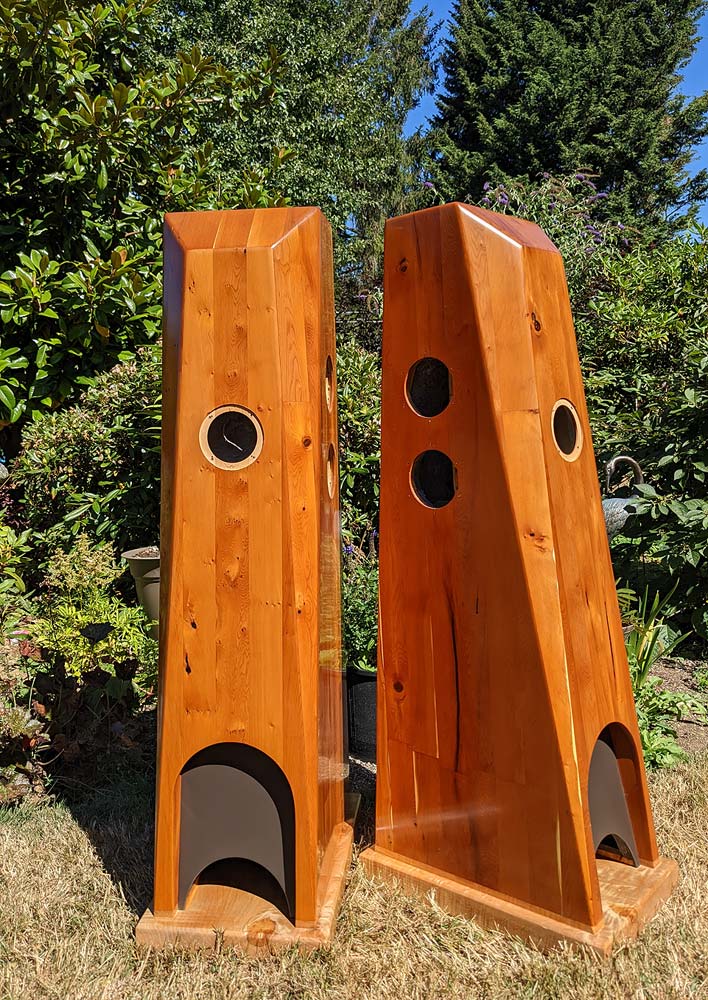
It is a development of these,
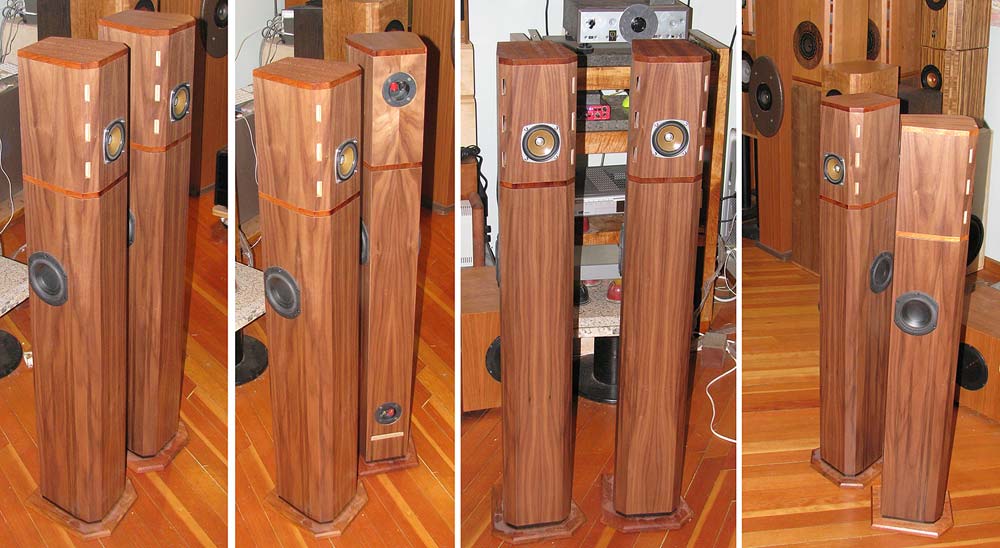
These too developed from the same concept (veneered now).
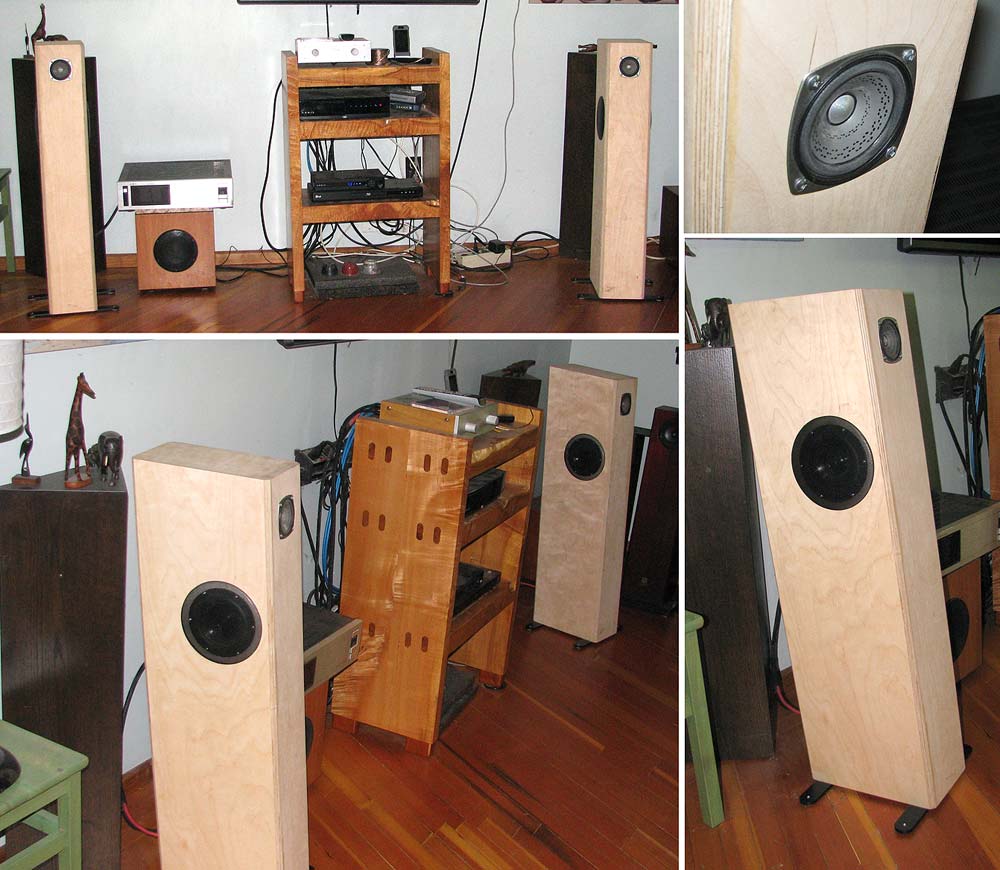
No build pictures of this one yet
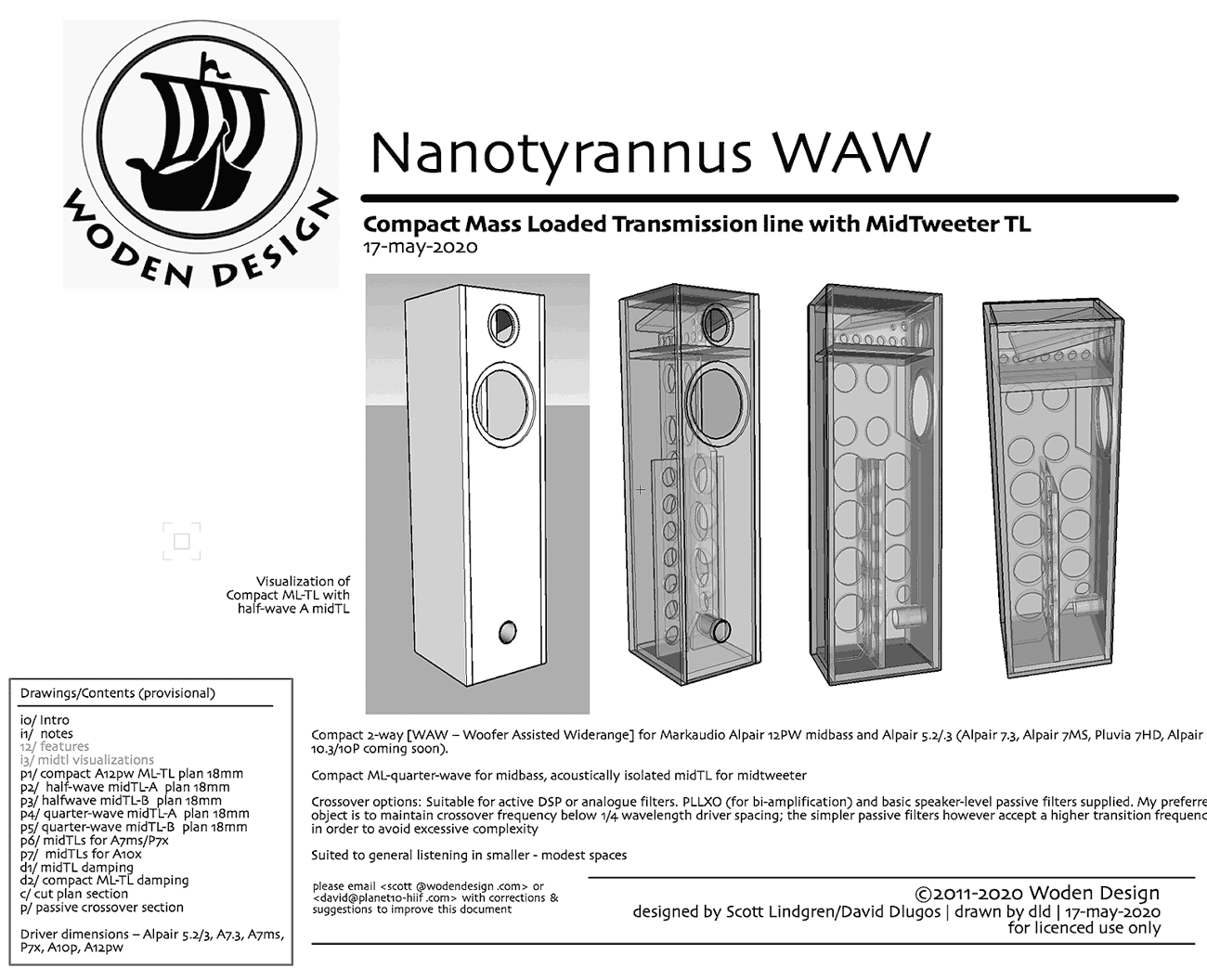
These are the ones i am keeping (MAOP 7 swapped in)
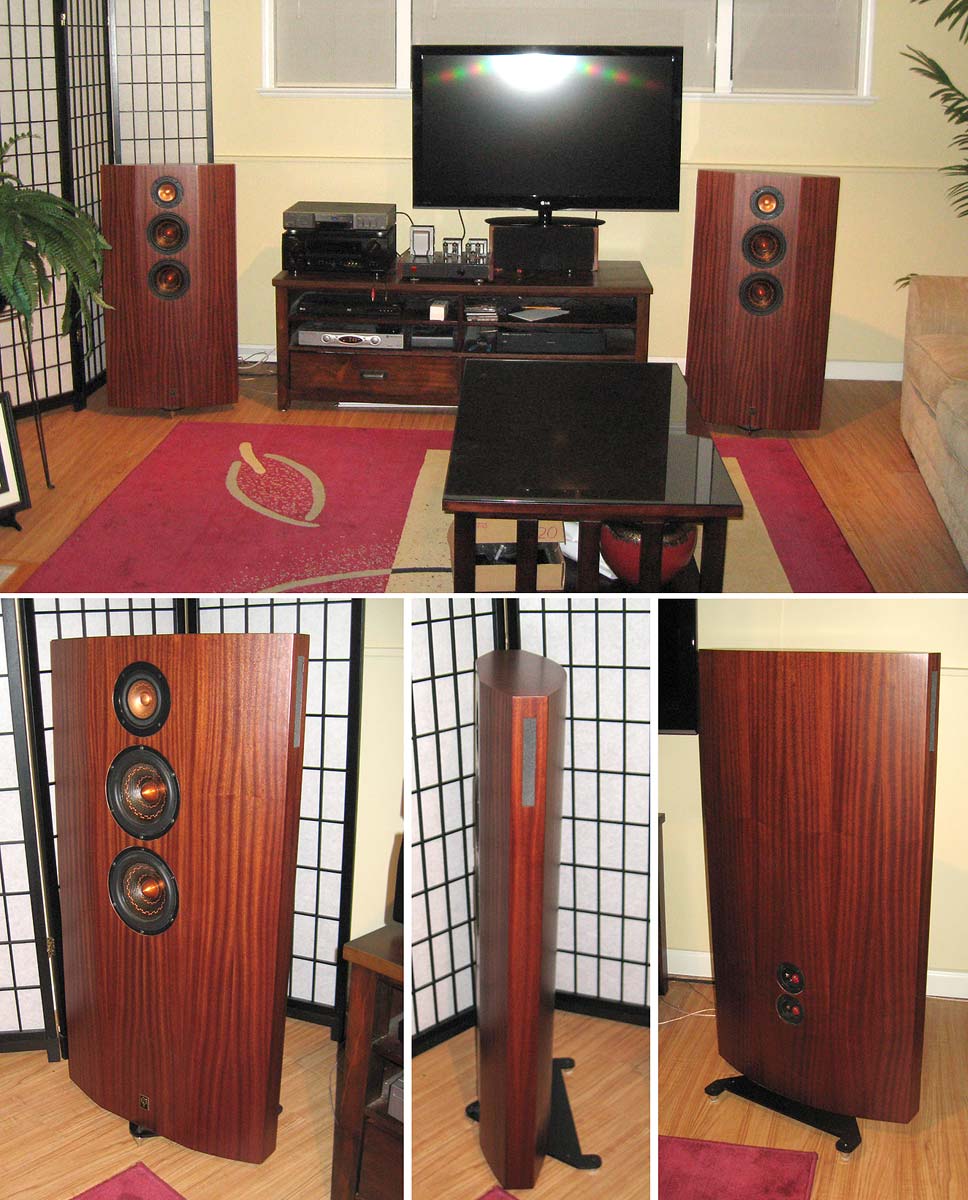
We have done s a few others.
dave
Last edited:
Historically, speakers were 100% passive, ergo the XO components were just 'flat out' too big/expensive below ~500 Hz, hence the use of wide BW (mid bass) woofers were the norm till fairly recently. That said, a relatively few of us DIYers were early adopters thanks to this article (PDF pg. 55).I’ve seen and heard plenty of 2-way speakers where a full-range driver was crossed over with a tweeter or super-tweeter, but not very many where the full-range driver is paired with a woofer. Is there a reason for this?
Thanks again for the responses. I'm still a tad embarrassed that, despite my years lurking in the forums, I managed to miss the WAW and FAST terminology related to this build concept. LOL
And thanks, Planet10, for the photos. I am always impressed by some of the aesthetic and woodworking skills folks are able to implement. I'm good at cabinet design and I build them like tanks (150-350 lbs), but no one will ever accuse me of building anything visually beautiful! (LOL with sad face)
And thanks, Planet10, for the photos. I am always impressed by some of the aesthetic and woodworking skills folks are able to implement. I'm good at cabinet design and I build them like tanks (150-350 lbs), but no one will ever accuse me of building anything visually beautiful! (LOL with sad face)
I am always impressed by some of the aesthetic and woodworking skills
I do design, Chris did the woodwork (Bernie did the solid yew veneer on the Facets (the ones with no drivers).
dave
Last edited:
Which is one of the reasons I find excessive use of cliquey acronyms and textspeak counterproductive (and often annoying). Half the time you need a translator or two to figure out what people are saying, and you may need to understand the context if it's an acronym used by more than one group. For non-native English speakers it has to be exponentially worse.despite my years lurking in the forums, I managed to miss the WAW and FAST terminology related to this build concept. LOL
For everything but units, using the actual words at least once is customary. But it's often only a few more characters, so just writing them out helps most everyone and only takes a few seconds. It might save multiple people 15 minutes of searching for the meaning later. It might also make the difference between someone understanding your point or not.
Last edited:
LOL... yeah, technical terms are a bit of a double edged sword. Depending on use and consistency/universality (and where the reader sits on the learning curve) they can make things easier... or harder. 🙂
....and me married with a daughter that's just turned freaking 55! Now that makes one 'feel' every one of the years! 🙁LOL... just looked at that PDF. Wow... the "good" ol' days! A year before I was born. 😆
The topic of this thread possibly raises a question that I've asked before but received no definitive answer. What are the advantages / disadvantages of a woofer and sub-woofer sharing the same air-space?
Take a couple of random drivers.
Visaton
Peerless
These two in a 35 litre cabinet offer 30Hz - 20Khz
I'm not au-fait with how speakers and cabinets actually work but I know sound is one of the ultimate variables. For the sake of argument let's say the Visaton requires 10 litres and the Peerless requires 20 litres. When and for what purpose do they require the displacement? The nature of air-compression dictates the larger the cabinet the less impact one driver would have on the other.
Is there a possibility that you'd end up in a weird, analogue, variable system?
1w = 30Hz - 20Khz
10w = 32Hz - 20Khz
100w = 40Hz - 20Khz
Is that a weird theory? Cabinet volume affects bass response, bass response diminishes as drivers fight for volume?
Take a couple of random drivers.
Visaton
Peerless
These two in a 35 litre cabinet offer 30Hz - 20Khz
I'm not au-fait with how speakers and cabinets actually work but I know sound is one of the ultimate variables. For the sake of argument let's say the Visaton requires 10 litres and the Peerless requires 20 litres. When and for what purpose do they require the displacement? The nature of air-compression dictates the larger the cabinet the less impact one driver would have on the other.
Is there a possibility that you'd end up in a weird, analogue, variable system?
1w = 30Hz - 20Khz
10w = 32Hz - 20Khz
100w = 40Hz - 20Khz
Is that a weird theory? Cabinet volume affects bass response, bass response diminishes as drivers fight for volume?
It reminds me of the question of how does a stereo pair of woofers act in a single box when the bass isn't always mono.
Hi Surtsey,
I’ll give you what I know, though I’m sure there’s more to it. Fundamentally, most speaker cabinets function to contain the driver back-wave and damp the driver. There are other functions with various cabinet designs (and even some open baffle designs which deliberately eschew these functions). But most speaker cabinets work toward some type of back-wave/sound pressure management. You can do some interesting things by deliberately allowing identical drivers to share cabinet space in various configurations, but that’s a different discussion.
One of the biggest drawbacks of not isolating the woofer and mid would be the coloration of frequency response and loss of mid-range clarity/transient response due to the larger woofer (especially at low frequencies and/or higher amplitude) messing with the smaller driver. Unless you’re specifically designing for some function of that interaction, it will get wonky and negatively impact your sound – particularly in a sealed or ported cabinet. A transmission line would likely be more forgiving since, in some ways, it functions as an open baffle. Though, given how (usually) simple it is to internally isolate the two drivers, it’s pretty standard practice for most cabinet implementations.
As far as how two different drivers (e.g. a mid and a woofer/sub-woofer) will specifically interact with regard to amplitude and low-frequency response, I don't know that math. I suspect you would have to just measure it.
I’ll give you what I know, though I’m sure there’s more to it. Fundamentally, most speaker cabinets function to contain the driver back-wave and damp the driver. There are other functions with various cabinet designs (and even some open baffle designs which deliberately eschew these functions). But most speaker cabinets work toward some type of back-wave/sound pressure management. You can do some interesting things by deliberately allowing identical drivers to share cabinet space in various configurations, but that’s a different discussion.
One of the biggest drawbacks of not isolating the woofer and mid would be the coloration of frequency response and loss of mid-range clarity/transient response due to the larger woofer (especially at low frequencies and/or higher amplitude) messing with the smaller driver. Unless you’re specifically designing for some function of that interaction, it will get wonky and negatively impact your sound – particularly in a sealed or ported cabinet. A transmission line would likely be more forgiving since, in some ways, it functions as an open baffle. Though, given how (usually) simple it is to internally isolate the two drivers, it’s pretty standard practice for most cabinet implementations.
As far as how two different drivers (e.g. a mid and a woofer/sub-woofer) will specifically interact with regard to amplitude and low-frequency response, I don't know that math. I suspect you would have to just measure it.
“…not very many where the full-range driver is paired with a woofer. Is there a reason for this?
Yes. Those who are beguiled by the sound of a full-range driver have already accepted that limited low frequency extension is the compromise. They’re willing to do without deep bass for the very real and convincing midrange. Given that, a little extra air up top is a plus, and doesn’t add much footprint. However, going the other way, to lower Hz, questions the whole enterprise, since it means more volume, more design and multi-way crossovers.
Last edited by a moderator:
Madrok, as it turned out, I was simply missing rather large, ongoing conversations about that approach, due to my ignorance of the nomenclature. Embarrassing but true! 🙂
- Home
- Loudspeakers
- Multi-Way
- 2-way with full-range and low XO question